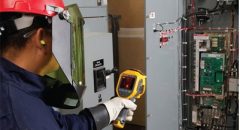Value-Added Safety Services
Organizations are increasingly investing in advanced, strategic safety services what we call value-added safety services that deliver measurable business benefits beyond basic compliance. This page explores what these services involve, why they matter, and how to implement them successfully.
Understanding Value in Safety Services
Defining “Value Added” in a safety context
“Value added” in safety means moving beyond mere compliance to deliver additional benefits: reduced risk, operational efficiency, stronger culture, and strategic advantage. For example, safety investments yield more than fewer injuries—they strengthen productivity and employee morale.
Differentiating core safety services vs. value-added safety services
Core safety services typically cover compliance, inspections, hazard identification, and regulatory reporting. Value-added safety services build on that: they integrate strategic risk insights, culture change, technology enhancements, training and continuous improvement.
Why businesses invest in value-added safety services
Companies invest in these services because safer workplaces reduce costs (incidents, fines, compensation) and improve business outcomes (efficiency, reputation, retention). For example, the Occupational Safety and Health Administration (OSHA) notes safety investment can reduce injuries, claims and boost productivity.
Key Components of Value-Added Safety Services
Risk assessment & hazard identification beyond compliance
- Advanced hazard-identification techniques (e.g., bow-tie analysis, participative checklists) help organizations go beyond standard checklists.
- Proactive risk assessments build trust, boost morale and lead to cost savings.
- Aligning assessments with business strategy ensures resources are focused where risk and value intersect.
Training, awareness & culture-building initiatives
- Effective training is more than regulatory tick-box—it fosters behaviour change, employee engagement and productivity.
- Awareness campaigns, leadership commitment and employee involvement embed safety into culture (not only process).
- Culture-building means creating shared ownership of safety, making it part of how work is done, not just something done to people.
Technology & monitoring enhancements (e.g., IoT, analytics)
- Wearables, connected worker platforms, IoT sensors and predictive analytics are increasingly used in value-added safety services.
- These tools enable real-time hazard detection, faster response, predictive prevention.
- Analytics provide insight into patterns of risk, enabling targeted interventions rather than blanket measures.
Documentation, access, and transparency (digital portals, records)
- Digital safety records, portals accessible to management and staff, transparent incident and near-miss reporting build accountability and continuous improvement.
- Having accessible data supports audits, demonstrates due diligence and helps embed safety as a strategic asset.
Continuous improvement & feedback mechanisms
- Value-added services include mechanisms for feedback (employee input, near-misses, audits) and continuous improvement loops to refine processes.
- Continuous improvement moves safety from static compliance to dynamic performance-driven practice.
What are the benefits to the organization?
Reduced incidents, fines and liability costs
- Organizations that invest in safety reduction measures see fewer injuries, illnesses, and regulatory penalties.
- Reducing incidents cuts workers’ compensation, downtime, and legal exposure.
Improved operational efficiency and productivity
- Embedding safety into operations often leads to streamlined workflows, less disruption, fewer stoppages, and better productivity.
- Employees work more confidently and steadily when hazards are managed.
Enhanced reputation, employee morale and retention
- A strong safety culture boosts employee morale and retention and enhances reputation among customers, investors, and communities.
- Being known as a safe employer helps attract talent and differentiates an organization.
Better regulatory preparedness and audit readiness
- Organizations with mature safety services are better positioned for audits, inspections, and regulatory changes—reducing surprises and penalties.
- Having systems, technology and culture in place means agility when regulation shifts.
Implementation Strategies for Success
Aligning services with business objectives and risk profile
- Begin by understanding your organization’s risk profile and aligning safety services with business goals—not simply copying generic plans.
- Ensure leadership sees safety as strategic, not just operational.
Choosing the right provider or building in-house capability
- Decide whether to partner with specialist safety-services firms or build internal capacity. The right choice depends on expertise, scale, budget and business context.
- Good providers bring technology, consulting, data-insights and integration capabilities.
Integrating value-added safety services into existing systems
- Safety services must be integrated into existing operations (processes, tech stack, culture) to drive value and avoid duplication or resistance.
- Engagement of frontline workers, leadership, IT and operations is key.
Measuring ROI and setting KPIs for safety services
- To realise value, define KPIs (incident rate, near-miss reporting rates, employee engagement, cost savings) and measure ROI over time.
- Use data from monitoring, training, audits and feedback to assess performance and adjust services.
Challenges & Pitfalls to Avoid
Over-promising extraneous services without value
- Avoid services that sound advanced but don’t tie to measurable outcomes. Value-added must be real, not window-dressing.
Lack of buy-in from leadership or frontline workers
- Without leadership support and frontline engagement, safety initiatives often fail to embed. Culture matters as much as technology.
Poor integration with core safety programmes
- Value-added services cannot stand isolated—they must integrate with core safety programmes (compliance, standard audits, procedures).
Mis-measuring impact and failing to adjust
- If you don’t measure the right metrics or act on insights, you risk spending on services with no visible impact or leaving improvement opportunities on the table.
Future Trends in Value Added Safety Services
The role of data analytics and predictive safety
- Predictive analytics and big-data are transforming safety: companies can now anticipate hazards rather than just respond.
- Data-driven safety becomes a strategic asset.
Remote monitoring, wearables and connected-worker solutions
- The market for remote worker safety monitoring and connected-worker platforms is growing rapidly with IoT, wearables, location tracking.
- Technologies such as smart helmets, sensor vests, geofencing and remote communication are becoming standard in high-risk industries.
Sustainability, well-being and holistic safety services
- Safety is expanding from injury prevention to include employee well-being, mental health, sustainability, and holistic risk management.
- Organisations will increasingly link safety services with ESG, health-&-well-being programmes and broader resilience strategies.
Regulatory shifts and global standardisation pressures
- Standards such as ISO 45001 are driving more structured safety management systems, with measurable performance improvements.
- Globalisation and supply-chain expectations mean organisations must meet higher safety standards internationally.
Conclusion & Call to Action:
By viewing safety not just as a cost of compliance but as a strategic value driver, your organization can unlock broader benefits across operations, people, culture, and reputation. Value-added safety services are the next frontier in embedding safety as a core business enabler.
Ready to elevate your safety strategy?
Partner with our experts to design, implement, and optimize value-added safety solutions tailored to your organization’s goals.
Contact Us to schedule a consultation and take your workplace safety performance to the next level.
Get free a quote
Submit your Details
+91 99994 02106
What we offer
Our Services
Identify, evaluate, and control process hazards with expert risk assessments, ensuring safe, reliable, and compliant industrial operations.

Identify, evaluate, and control process hazards with expert risk assessments, ensuring safe, reliable, and compliant industrial operations.

Implement site safety plans, audits, and training to prevent accidents, ensuring safer construction environments and regulatory compliance.

Design, engineer, and audit fire protection systems ensuring reliable performance, asset safety, and adherence to national safety standards.

Empowering workforce with certified HSE, fire, and industrial safety training programs for skill development and regulatory competence.

Create immersive, interactive VR safety training modules for realistic learning experiences in hazard recognition and emergency preparedness.
How it works
Industry Consultation
Project Scoping & Industry Brief
Service Selection
Site Visit & Inspection
Audit & Analysis
Report Submission & Discussion
Frequently Ask Question
Value-added safety services go beyond basic compliance and hazard inspections. They integrate strategy, technology, and culture-building to create measurable business benefits such as improved productivity, reduced costs, and stronger employee engagement.
Investing in value-added safety services helps organizations reduce incidents, fines, and downtime while enhancing operational efficiency, regulatory readiness, employee morale, and overall brand reputation.
Core components include advanced risk assessments, culture-building training, technology integration (IoT, wearables, analytics), digital documentation, and continuous improvement mechanisms that turn safety into a proactive business driver.
Successful implementation involves aligning safety initiatives with business objectives, engaging leadership and frontline workers, integrating new services into existing systems, and measuring ROI through defined KPIs like incident rates and engagement levels.
Emerging trends include predictive analytics, connected-worker technologies, integration with ESG and well-being programs, and alignment with global standards such as ISO 45001—all contributing to more proactive and holistic safety management.
